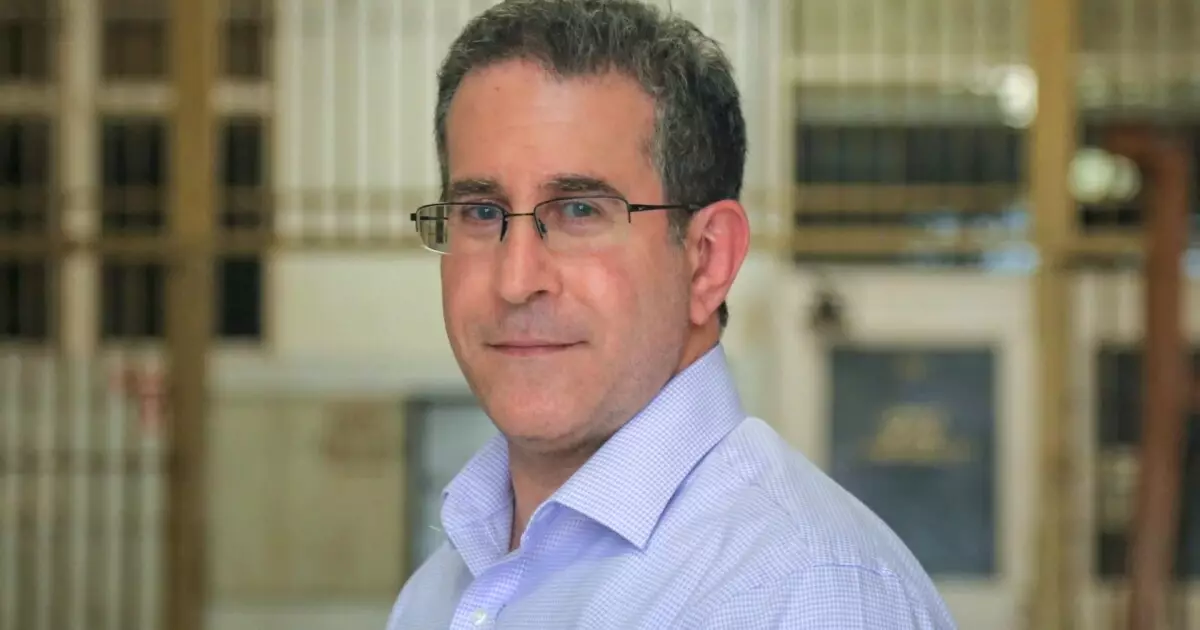Jay Olson, the deputy comptroller for public finance in New York City, paints a vivid picture of the recent chaos rattling the financial markets. With a career in public finance spanning over two decades, Olson has navigated through numerous crises such as 9/11, the Great Recession, and COVID-19. Yet, the current market turmoil felt like a familiar beast—one that has no tangible cause yet bears the weight of devastating uncertainty. “This week was as stressful as some of life’s defining moment,” Olson remarked. The echoes of historical turmoil suggest that we are once again at a crossroads, where decisions will reverberate for years to come.
The gravity of the situation begs for a deeper understanding of why, despite the absence of specific alarming events like terrorist attacks or pandemics, financial markets are experiencing turbulence. It reflects a broader economic malaise exacerbated by factors such as inflationary pressures and geopolitical tensions. As Olson heads into the next leg of the bond issuance journey, the challenges are more than just fiscal; they are emblematic of a city grappling with its identity in an evolving economic landscape.
Navigating Uncharted Waters
New York City recently set sail with a substantial $1.57 billion bond sale amidst this storm. While some issuers opted to sit on the sidelines, waiting for calmer seas, New York pushed forward, demonstrating a level of resolve that stands in stark contrast to the hesitancy displayed by others. With nearly $18 billion worth of bond offerings on the horizon, the city clearly has no time for half-measures or second guesses. “Later isn’t an option—later is already booked,” Olson declared. This urgency is reflective of larger systemic issues in public finance where timely intervention is essential for sustaining city infrastructure and services.
Interestingly, the bond issuance comprised two series—one notably tax-exempt—and Olsen’s team had to juggle execution strategies deftly. The ratings agencies responded positively, assigning ratings ranging from Aa2 by Moody’s to AA-plus by KBRA. This showcases a semblance of stability that should soothe investor nerves while hinting at growing confidence in the city’s fiscal health. However, Olson’s admission, “lower would have been better,” serves as a stark reminder that even seemingly positive circumstances come with a price—yield rates that reflect the weight of uncertainty.
The Investor’s Dilemma
As an investor looking at New York’s bonds, one must weigh risk and reward carefully in the current climate. Patrick Luby, a senior municipal strategist, raised a pertinent point about the inherent risks investors face in today’s market. He predicts a potential pick-up in new issuances as other entities dust off previously sidelined transactions. However, this uptick doesn’t negate the looming question: is the market truly receptive to an influx of new bond offerings?
Investors must be acutely aware that while New York City may serve as a cornerstone of their investment portfolios, it is not immune to broader market conditions. The realities of diminished reinvestment demand coupled with tariff turbulence cast a shadow over performance expectations. For the city’s public finance team, there’s a fine line between aggressively pursuing funding needs and ensuring overwhelming investor confidence. They are navigating through a storm of uncertainty and must act strategically to maintain that precious confidence.
Political Crosswinds and Financial Fortitude
The impact of recent tariffs and the federal government’s policies cannot be understated. New York City has historically depended on federal funding for numerous essential projects, and the current political landscape presents added complications. While Olson seems focused on the city’s immediate capital needs, he cannot dismiss the risks posed by federal decisions. “I don’t think any credit analyst can be oblivious to the federal threats,” Luby notes, highlighting that while these risks are significant, they do not fundamentally alter the city’s strong credit standing—yet.
This juxtaposition of local and federal dynamics underscores the inherent tension in municipal finance, particularly in a city that offers a microcosm of the country at large. Investors, analysts, and municipal leaders alike have to strike a balance between optimism and pragmatism. As honed by years of navigating turbulent waters, Olson is setting a course for the city in this high-stakes environment, seeking out avenues to secure financing that will support its infrastructural needs.
The current complexities facing New York City’s financial landscape reveal a broader truth about resilience in a multipolar world. As Olson leads his team forward, the decisions made within the unforgiving timelines of the market will shape not only the city’s future but also reframe what it means to invest in one of the world’s most vibrant urban landscapes.

